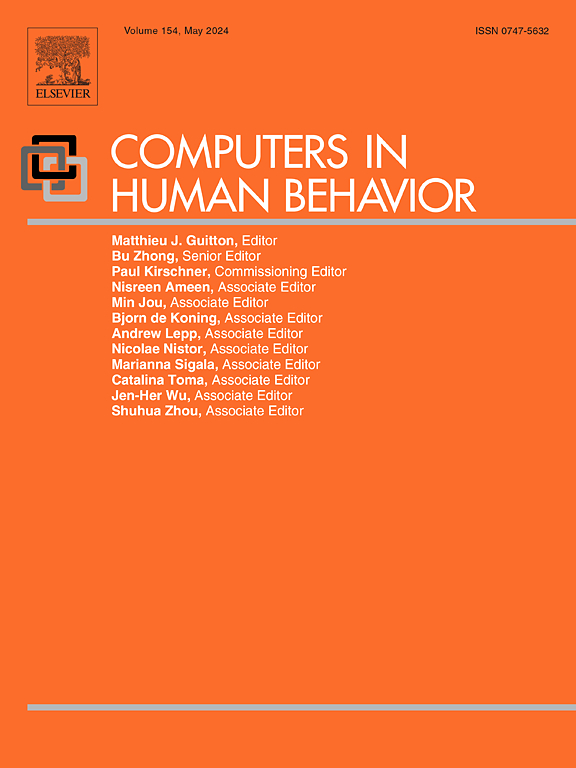用户生成内容和品牌参与:探索电子符号学和符号互动主义在Instagram上的作用
IF 9
1区 心理学
Q1 PSYCHOLOGY, EXPERIMENTAL
引用次数: 0
摘要
本研究探讨了符号学和符号互动主义在塑造消费者对奢侈时尚品牌Instagram页面的感知和购买行为方面的复杂相互作用。现有的研究主要集中在社交媒体影响的定量方面,这在理解这些社会互动的定性细微差别方面留下了研究空白。本研究通过探索消费者如何解释和赋予奢侈时尚品牌的符号和标志意义来解决这一差距,这受到他们的社会和文化背景的影响。共有718条评论来自10个知名奢侈时尚品牌的Instagram页面。同时,对Instagram上奢侈时尚品牌的用户进行了21次深度访谈,重点关注Instagram环境下的符号学和购买倾向。基于符号互动理论和符号学理论,该研究确定了影响Instagram消费者行为的六个主要因素:审美激发、符号话语、符号价值、数字共鸣、符号信仰和符号学遵从。每个因素都代表了消费者解读和回应品牌信息的特定方式。研究显示,消费者在Instagram上与奢侈时尚品牌的互动不仅仅是视觉吸引力,还涉及到一个动态的、共生的意义创造和解释过程。这项研究为Instagram上的客户与品牌互动提供了新颖的见解,并为时尚营销人员提供了实际意义。然而,它的范围仅限于Instagram和奢侈时尚品牌,这表明未来的研究可以探索其他社交媒体平台和不同的品牌类别。本文章由计算机程序翻译,如有差异,请以英文原文为准。
User Generated Content and Brand Engagement: Exploring the role of electronic semiotics and symbolic interactionism on Instagram
This study investigates the complex interplay of semiotics and symbolic interactionism in shaping customer perceptions and buying behaviours on luxury fashion brands’ pages on Instagram. Existing research predominantly focuses on the quantitative aspects of social media influence, which leaves a research gap in understanding the qualitative nuances of these social interactions. This study addresses this gap by exploring how consumers interpret and attribute meanings to luxury fashion brands' symbols and signs, which are influenced by their social and cultural contexts. A total of 718 reviews were garnered from the Instagram pages of 10 eminent luxury fashion brands. Concurrently, 21 in-depth interviews were conducted with users engaged with luxury fashion brands on Instagram, which focused on semiotics and purchasing tendencies within the Instagram milieu. Grounded in symbolic interactionism theory and semiotic theory, the study identified six primary factors influencing consumer behaviour on Instagram: aesthetic excitation, symbolic discourse, emblematic valuation, digital resonance, semiotic faith, and semiotic compliance. Each factor represents specific ways consumers interpret and respond to brand messages. The research revealed that consumers' engagement with luxury fashion brands on Instagram extends beyond mere visual appeal to involve a dynamic, symbiotic process of meaning-making and interpretation. The study contributes novel insights into customer–brand interactions on Instagram and offers practical implications for fashion marketers. However, it is limited in its scope to Instagram and luxury fashion brands, which suggests that future research could explore other social media platforms and different brand categories.
求助全文
通过发布文献求助,成功后即可免费获取论文全文。
去求助
来源期刊

Computers in Human Behavior
Multiple-
CiteScore
19.10
自引率
4.00%
发文量
381
审稿时长
40 days
期刊介绍:
Computers in Human Behavior is a scholarly journal that explores the psychological aspects of computer use. It covers original theoretical works, research reports, literature reviews, and software and book reviews. The journal examines both the use of computers in psychology, psychiatry, and related fields, and the psychological impact of computer use on individuals, groups, and society. Articles discuss topics such as professional practice, training, research, human development, learning, cognition, personality, and social interactions. It focuses on human interactions with computers, considering the computer as a medium through which human behaviors are shaped and expressed. Professionals interested in the psychological aspects of computer use will find this journal valuable, even with limited knowledge of computers.
 求助内容:
求助内容: 应助结果提醒方式:
应助结果提醒方式:


